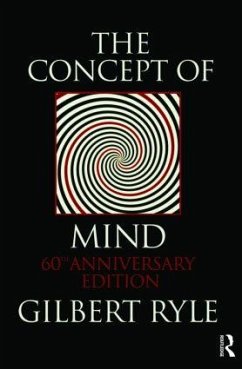
Biological and Neuroscientific Foundations of Philosophy
Towards a New Paradigm
Versandkostenfrei!
Versandfertig in 6-10 Tagen
40,99 €
inkl. MwSt.
Weitere Ausgaben:

PAYBACK Punkte
20 °P sammeln!
Biological and Neuroscientific Foundations of Philosophy is an authoritative text addressing both academicians and students, and it proposes an integrated and holistic view of scientific study and presents a new paradigm by which to study philosophy. It highlights, in a systematic and sufficiently simple manner, the fundamental role of neuroscience, neuropsychology and biology within philosophical reflection.Written by an expert in neuroscience, the book draws together different strands of study to explore how scientific and neuropsychological discoveries are integral to the study of philosoph...
Biological and Neuroscientific Foundations of Philosophy is an authoritative text addressing both academicians and students, and it proposes an integrated and holistic view of scientific study and presents a new paradigm by which to study philosophy. It highlights, in a systematic and sufficiently simple manner, the fundamental role of neuroscience, neuropsychology and biology within philosophical reflection.
Written by an expert in neuroscience, the book draws together different strands of study to explore how scientific and neuropsychological discoveries are integral to the study of philosophy and our understanding of mind. It argues to move away from a philosophical paradigm that is based solely within physics and mathematics and to embrace more complex frames of data and knowledge of psychology and biology to advance the discipline. The book also reflects on the symbolic dimensions and the concept of "information" that characterize DNA (biology), and the psyche and language (cognitive and social neuroscience). It offers an ambitious thesis that ties together the philosophical foundations of science, the evolutionary history of human beings, social organization, communication and consciousness.
This interdisciplinary work will be highly beneficial for researchers and postgraduate students of neuroscience, philosophy and biological sciences, as well as those interested in the intersection between philosophy and neuroscience.
Written by an expert in neuroscience, the book draws together different strands of study to explore how scientific and neuropsychological discoveries are integral to the study of philosophy and our understanding of mind. It argues to move away from a philosophical paradigm that is based solely within physics and mathematics and to embrace more complex frames of data and knowledge of psychology and biology to advance the discipline. The book also reflects on the symbolic dimensions and the concept of "information" that characterize DNA (biology), and the psyche and language (cognitive and social neuroscience). It offers an ambitious thesis that ties together the philosophical foundations of science, the evolutionary history of human beings, social organization, communication and consciousness.
This interdisciplinary work will be highly beneficial for researchers and postgraduate students of neuroscience, philosophy and biological sciences, as well as those interested in the intersection between philosophy and neuroscience.














